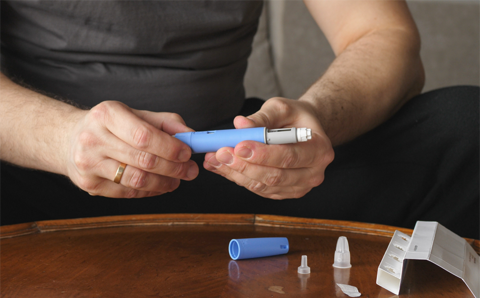
New treatments represent “biggest type 2 diabetes care shake-up” in 10 years
Earlier access to new treatments is set to benefit millions of people living with type 2 diabetes.
The National Health Institute for Clinical Excellence (NICE) has announced plans to re-evaluate priority clinical pathways in what they have described as the “biggest shake-up in type 2 diabetes care in a decade”.
The plans will follow guidelines set out in the recently published NHS 10-year plan.
NICE aims to move away from a “one-size-fits-all” approach in draft guidelines that propose a shift from automatically starting all patients on one medicine to personalised treatment plans that aim to prevent heart failure, heart attacks and other serious medical problems.
Around 4.6 million people are diagnosed with diabetes in the UK, with around 90% of those having type 2 diabetes. In addition, it is estimated that almost 1.3 million people in the UK are likely to have undiagnosed type 2 diabetes.
The latest proposals from NICE’s independent guideline committee will involve a shift in priority for what treatments are available for people living with type 2 diabetes and based on a case-by-case basis dependent on needs of the individual patient.
The committee has now expanded access to newer diabetes medicines including SGLT-2 inhibitors (with names like canagliflozin, dapagliflozin, empagliflozin, and ertugliflozin) from being second-choice treatments to first-choice treatments.
In addition, some groups of patients stand to benefit from another type of medicine called GLP-1 receptor agonists (such as liraglutide or semaglutide), as opposed to being provided for later stages of treatment, as previously.
For patients who cannot tolerate metformin (a blood glucose-lowering medicine that is traditionally the first option for treating type 2 diabetes), the new guidelines recommend starting with an SGLT-2 inhibitor on its own. NICE said this is because growing evidence shows these medicines protect the heart and kidneys beyond just controlling blood glucose levels.
Recent figures suggest that nearly 22,000 lives could be saved once uptake of the recommended changes for SGLT-2 inhibitors, as a joint first line treatment option with metformin, reaches 90% of the patient population.
People with type 2 diabetes should speak with their GP or diabetes team at their next annual review meeting to discuss what treatment option is right for them.

The draft guideline aligns with the 10-Year Health Plan for the NHS which highlights the need for a shift from treatment to prevention, with people being encouraged to take up an approach to their own healthcare that aims to prevent the future complications of diabetes.
The draft guidance also supports the roll out of digital care through continuous glucose monitoring and community-based care delivery.
Professor Jonathan Benger, deputy chief executive and chief medical officer at NICE, said: “These draft recommendations demonstrate how NICE is already delivering on commitments within the 10-year-plan by updating guidance to drive smarter NHS spending. This guidance means more people will be offered medicines where it is right to do so to reduce their future risk of ill health.”
Professor Benger added: “This represents a significant evolution in how we approach type 2 diabetes treatment. We are moving beyond simply managing blood sugar to taking a holistic view of a person's health, particularly their cardiovascular and kidney health.
"The evidence shows that certain medicines can provide important cardiovascular benefits, and by recommending them as part of initial treatment, we could help prevent heart attacks, strokes and other serious complications before they occur. This is particularly important given that cardiovascular disease is the leading cause of death in people with type 2 diabetes.”
Existing concerns about under-prescribing of SGLT-2 inhibitors are also addressed, with real-world evidence showing these medicines are not being offered equitably across the UK.
NICE reported that they had analysed records of almost 590,000 people and found that SGLT-2 inhibitors are under-prescribed, particularly to women, older people, and Black or Black British individuals.
Dr Waqaar Shah, chairman of the guideline committee, said: “We know that SGLT-2 inhibitors are currently under-prescribed, and our health economics analysis shows that people living in the most deprived areas would particularly benefit from universal access to these treatments. These recommendations could help reduce health inequalities while providing better outcomes for everyone.”
The draft guideline introduces different treatment approaches based on patient characteristics and other health conditions, including:
- adults with cardiovascular disease should be offered triple therapy including a GLP-1 receptor agonist.
- adults with early onset type 2 diabetes (diagnosed before age 40) are offered dual therapy before a GLP-1 receptor agonist is considered.
- people living with obesity will receive specific treatment combinations.
- those with chronic kidney disease have tailored recommendations based on their kidney function.
- adults with frailty should be considered for metformin alone initially.
A statement from NICE said: “The new guidelines also include special recommendations for adults who may be frail or have multiple health conditions. For these people, doctors will usually start with just one medicine (metformin). If metformin does not work for them, they may be offered a different type of medicine instead. This recognises that more vulnerable people often do better with fewer medicines and more straightforward treatment plans.”
The draft guideline is open for public consultation until Thursday, 2nd October. NICE’s guideline committee will consider all feedback received before publishing the final recommendations. The consultation document and details of how to respond are available to view on the NICE website.
Read Ten year plan for the NHS aims to “hand power back to the patients”
Read more about type 2 diabetes
I would like to make a regular donation of
I would like to make a single donation of
There are lots of ways to raise money to support
people living with all forms of diabetes.
Bake, Swim, Cycle, Fly ... Do It For DRWF!
Fundraise with us
Recent News


